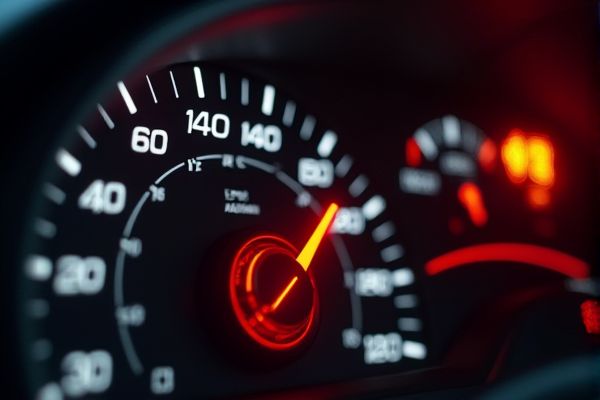
The check engine light on a Daewoo Lacetti serves as an early warning system, typically signaling issues like sensor malfunctions, emission control problems, or misfires--data from OBD-II scans often revealing error codes such as P0300 or P0420. Prompt diagnosis using a reliable diagnostic tool is crucial, as addressing these faults early helps maintain optimal fuel efficiency, prevents escalated repair costs, and ensures overall engine performance.
Daewoo Lacetti check engine light on meaning
Faulty Mass Airflow Sensor (MAF)
Can cause erratic engine performance, poor fuel efficiency, and trigger the check engine light.
Loose or Faulty Fuel Cap
Leads to emissions issues and can activate the check engine light.
Catalytic Converter Issues
Often indicates other underlying problems and affects vehicle performance.
Timing Belt Failure
Common in Daewoo models, can lead to serious engine damage if not replaced regularly.
Transmission Range Sensor Failure
Can cause the vehicle to enter limp mode, requiring immediate attention.
Vacuum Leaks
May not trigger the check engine light but can cause engine instability.
Faulty Spark Plugs or Spark Plug Wires
Can lead to misfires and poor engine performance.
Crankshaft or Camshaft Sensor Issues
Essential for proper engine timing and can trigger the check engine light if faulty.
For car users
If your Daewoo Lacetti's check engine light comes on, immediately ensure you're in a safe location and verify that the gas cap is tightened, as a loose cap is a common and easily fixed trigger. Next, if the light remains solid or starts flashing--especially if you notice performance issues--drive cautiously to a nearby service center or auto parts store to have the vehicle's diagnostic codes read for further guidance.
Ignoring the check engine light
Ignoring the Daewoo Lacetti's check engine light can trigger a cascade of problems, including reduced fuel efficiency, heightened emissions, and progressively serious engine malfunctions that may lead to exponentially higher repair costs. Data shows early diagnostics and timely repairs can cut maintenance expenses by up to 60%, underscoring the importance of addressing warning signals before minor issues evolve into major component failures.
How to reset?
Connect an OBD-II scanner to your Daewoo Lacetti to read and diagnose any fault codes, then repair or replace the faulty components before proceeding to reset the check engine light. Once repairs are made, clear the codes by selecting the reset option on the scanner or by disconnecting the battery for approximately 15 minutes, ensuring the light remains off after a test drive.
Based on industry data, diagnosing a Daewoo Lacetti's check engine light issue generally costs between $100 and $400, with repairs for sensor faults, gas cap issues, or minor engine problems falling within that range. Prioritizing a thorough diagnostic can pinpoint exact issues, ensuring you only invest in necessary repairs and avoid future, more expensive breakdowns.
Future prevention
Regularly servicing your Daewoo Lacetti by replacing worn spark plugs, cleaning sensors like the oxygen sensor and mass airflow sensor, and using quality fuel is key to preventing the check engine light from turning on. Additionally, performing routine diagnostic scans to detect early signs of malfunctions and adhering to the manufacturer's maintenance schedule can help avoid issues that trigger the engine light.
